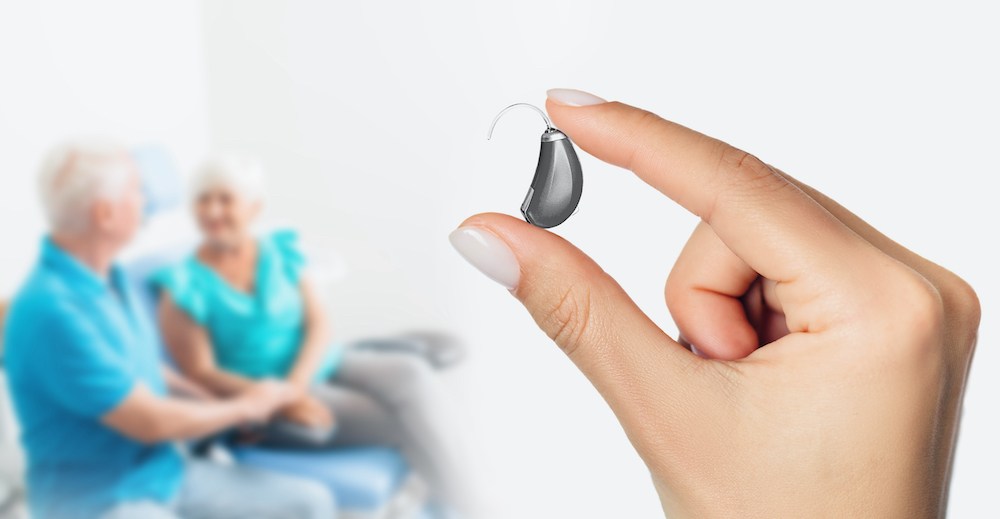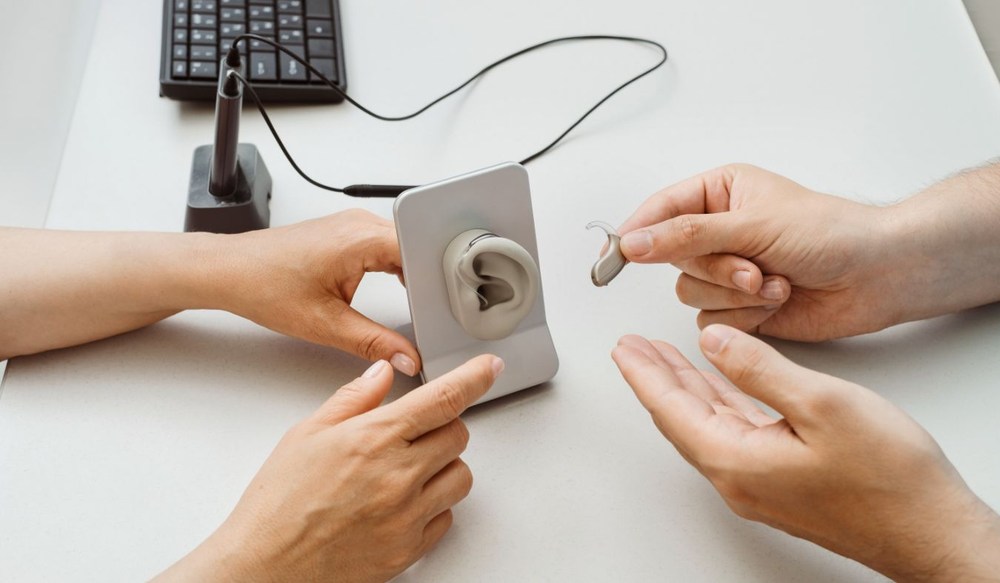The Impact of Hearing Aid Design on Wearer Comfort
Hearing aid design directly affects whether people actually use them. If a

By: admin | November 18, 2025
Hearing aid design directly affects whether people actually use them. If a device causes irritation, feels awkward or doesn’t fit properly, most people stop wearing it, sometimes within weeks of getting it. The physical experience of wearing a hearing aid determines whether it becomes part of your routine or something you avoid. Weight distribution, where the device rests on your ear, how it responds to earwax and moisture, and even how it feels when you wear glasses or a hat are all practical details that matter more than most people realize.
The right design choices mean you can forget you’re wearing it, which is exactly the point. You need a device that handles real-world conditions like sweat from exercise, humidity, temperature changes and hours of continuous wear without discomfort. Some designs work better for people with dexterity issues or those who need to adjust settings frequently throughout the day. Others prioritize stability for active lifestyles or minimal visibility for professional settings. The best hearing aid is the one that fits your life well enough that wearing it becomes automatic.
The design of a hearing aid involves more than just how it looks. Every part of its construction is created with daily comfort and practicality in mind. Several factors influence how hearing aids are designed, including:
Wearing hearing aids every day means that comfort is essential. If your device causes irritation or feels uncomfortable, you may be less likely to use it as often as needed. A comfortable hearing aid helps you stay engaged with others and participate in daily activities without distraction.
Comfortable devices make it easier to focus on conversations and can help prevent soreness or pressure on your ears. However, finding the right fit may take some time, and some styles may not suit those with sensitive skin or unique ear shapes. This is why working with a hearing care provider to try different styles and materials can make such a difference.
There are different types of hearing aids, like behind-the-ear (BTE), in-the-ear (ITE) and completely-in-canal (CIC) styles. Each type sits differently on or in your ear, which affects how it feels throughout the day.
A loose device may slip out of place, while a tight one can lead to discomfort. The right fit keeps your hearing aid secure and comfortable during daily activities.
Your audiologist uses careful measurements to recommend the best style for your needs. Some hearing aids are custom-molded for your ear shape, while others use standard sizes with adjustable parts. The type and fit you choose can influence your comfort, how well you hear and how likely you are to use your hearing aids consistently.
The size and shape of your hearing aid play a big role in comfort. Smaller devices tend to be lighter and less noticeable, while larger ones may include more features but can feel bulkier.
Understanding these factors helps you select a hearing aid that matches your ear shape and daily needs. A good fit often leads to greater comfort, which encourages regular use and supports better hearing in various settings.
The weight of your hearing aid can affect how comfortable it is for long periods. Heavier devices may put extra pressure on your ear and cause discomfort if worn for many hours each day. Lightweight options are often easier to wear for extended periods and may help reduce soreness.
The materials used in hearing aids play an important role in comfort, particularly for those with sensitive skin. Plastics, silicone and hypoallergenic metals are commonly used, but even these can sometimes cause redness, itching or general irritation. How the device rests against your ear, combined with your skin type, can influence whether irritation develops, especially when wearing the aids for long periods each day.
Choosing the right materials can make a noticeable difference in comfort and usability. Hypoallergenic coatings, soft or medical-grade silicone tips, and nickel-free metal components can help reduce the risk of skin reactions. Working with your audiologist to test different options ensures your hearing aids are not only effective but also comfortable enough to wear all day without discomfort. This attention to materials helps you focus on hearing rather than adjusting or worrying about irritation.
The shape of your ear canal can have a big impact on how a hearing aid fits and feels. Everyone’s ear canal is different, with some being straight while others curve or narrow in certain areas. A device that doesn’t match your ear canal shape can create pressure points or allow sound to escape which may lead to feedback or whistling.
Custom-molded hearing aids are often suggested for those with unique ear canal shapes because they can improve both comfort and sound quality. Working with your audiologist to find the right fit ensures the device sits securely, feels natural and delivers the best possible listening experience throughout the day.
If you worry about your hearing aid slipping out during activity or when wearing a mask, there are options that help keep your device securely in place. These additions can make wearing your hearing aids more comfortable and reduce the need to adjust them throughout the day.
Options include soft ear hooks, sports clips and cords that attach to the hearing aid to hold it steady on your ear. Some devices use sleeves or custom molds that fit closely to your ear shape, helping prevent movement or accidental loss during daily activities.
Easy-to-use controls and buttons are an important part of hearing aid design. Many people appreciate simple switches or dials that can be adjusted without much effort. Large, well-marked buttons make it easier to change volume or settings, especially if handling small objects is difficult.
Some hearing aids feature raised push buttons, sliding switches or touch controls. These user-friendly options let you adjust your device quickly, even when you are busy. Simple controls reduce the chance of mistakes when changing programs or turning your hearing aids on and off, leading to less frustration and a more comfortable experience.
Changing or charging hearing aid batteries can be difficult if you have limited finger strength or find small objects hard to manage. Tiny battery doors and small batteries may lead to frustration or dropped parts.
Rechargeable hearing aids with easy-to-use charging docks can help. These devices often use larger contact points and simple magnetic connections, making it easier to place your hearing aids in the charger. Many modern hearing aids also include low-battery alerts and indicator lights to show when attention is needed, helping you avoid unexpected power loss.
Noise reduction technology in hearing aids makes listening more comfortable, especially in places with a lot of background noise. This feature lowers unwanted sounds so you can focus on speech and important noises.
To get the most out of noise reduction:
Custom earmolds are shaped to fit your ear exactly, while standard options use a one-size-fits-most design. This difference affects comfort and how well your hearing aid stays in place.
Custom molds provide a secure fit and help prevent slipping and feedback. Standard options may be faster to fit but can feel loose or create pressure points for some people. Custom molds are often recommended if you have unique ear shapes or need extra comfort for long-term use.
Keeping your hearing aids clean and well-maintained is essential for comfort and reliable performance. Even small amounts of earwax, moisture or debris can affect how your device feels and functions, and can lead to repairs if left unaddressed.
Follow these daily care tips:
Finding a comfortable hearing aid starts with knowing what matters most to you. Think about how the device feels on your ear, how easy it is to use and whether it fits into your daily routine. Use this checklist to guide your choice: check the size and weight of the device, ask about materials for sensitive skin, look for user-friendly controls, make sure the fit matches your ear shape, consider accessories for stability, and review battery or charging options that suit your lifestyle.
Comfort is personal; what works well for one person may not feel right for another. Taking time to consider these details can help you find a hearing aid that supports both comfort and better hearing in daily life.
Selecting a hearing aid that fits well and feels comfortable is about more than just appearance or style. When your device sits correctly, moves naturally with your ear, and doesn’t cause irritation, you’re more likely to wear it consistently. Comfort, stability, and ease of adjustment all play a part in making your hearing aids feel like a natural part of your daily routine. Paying attention to these details helps you get the most out of your devices without thinking twice about them.
Getting a hearing aid that truly fits your needs takes careful consideration and guidance from an audiologist. The team at Great Lakes Bay Hearing in Bay City and Midland, MI at (989) 941-0627 can help you select a device designed for comfort, durability and daily use.
Tags: hearing aid basics, hearing aid repair, hearing aid styles

Hearing aid design directly affects whether people actually use them. If a
By: admin | November 18, 2025

Many people expect hearing aids to provide clear hearing in every
By: admin | September 24, 2025

Hearing affects almost every interaction we have at work – from team
By: admin | May 23, 2025
